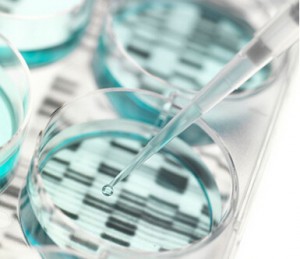Antimicrobial peptides are a kind of small peptides, which widely exist in nature organisms. They are important parts of the innate immune system of organism. Antimicrobial peptides have a wide range of activities against bacteria, fungi, parasites, viruses, as well as anticancer functions. Based on the fact, with the discovery of more and more antibiotic-resistant microbes, antimicrobial peptides have been applied widely in the field of pharmaceutical industry and food additives.
 Since antimicrobial peptides are so important, increasing researchers are trying to trace the sources of such special peptides. Generally, according to different sources of antimicrobial peptides, they can be divided into four categories, namely from insects, animals, microorganisms genetically engineered bacteria, and synthetic antimicrobial peptides. So far, more than 1,500 different sources of antimicrobial peptides have been discovered.
Since antimicrobial peptides are so important, increasing researchers are trying to trace the sources of such special peptides. Generally, according to different sources of antimicrobial peptides, they can be divided into four categories, namely from insects, animals, microorganisms genetically engineered bacteria, and synthetic antimicrobial peptides. So far, more than 1,500 different sources of antimicrobial peptides have been discovered.
1. Antimicrobial peptides from insects
Insects, as the world’s largest species of creature (more than one million species), have a high degree of adaptability and efficient defense mechanisms. Antimicrobial peptides are a class of peptides produced by microbial infection or accidental injury in insects’ hemolymph and body tissues. Insects antimicrobial peptides have played an important role in the humoral immune defense, the fat body (functionality is similar to the mammalian liver) synthesis of antimicrobial peptides can be secreted into the hemolymph of the body and then react to pathogens. Until now, more than 200 kinds of antimicrobial peptides from insects have been found. In addition, these peptides are divided into several categories according to their amino acid sequences and antimicrobial features, such as in copaxone.
2. Antimicrobial peptides from animals
Antimicrobial peptides were originally found in invertebrate animals and then also found in vertebrates. Based on the fact, these peptides exhibit diverse structures and sequence specificity under varying targets. Researchers have found that those antimicrobial peptides that are encoded by gene can be expressed in many different tissues of organisms mammals, amphibians, fish, insects, etc..
3. Antimicrobial peptides from microorganisms engineered bacteria
Long-term use of antibiotics leads to increasing resistant strains, so humans need to find a new antimicrobial agent. Antimicrobial peptides with a broad-spectrum antimicrobial activity can quickly kill the target, which means it is the most promising alternative to replace the traditional antibiotics. However, actual production application of antimicrobial peptides is not so easy to realize. The most important is that high cost of production limits the wide application of antimicrobial peptides such as copper.
4. Antimicrobial peptides from artificial synthesis
In recent years, researchers have made in-depth study on antimicrobial peptides, and they try to synthesize the peptide in artificial method. Certainly, it has made some achievements in medical applications. In fact, antimicrobial peptide drugs have already entered the global market, such as magainin which can kill viruses and cancer cells.
Due to the abuse of antibiotics, more and more bacteria may become strains resistant to traditional antibiotics. People are trying to find a replace for traditional antibiotic drugs so that antimicrobial peptides have gained wide attention. Currently, the global researchers have made in-depth study on antimicrobial peptides mechanism, drug efficacy, safety, and other related research, which will provide antimicrobial peptides updated online database service as well as the prospects.